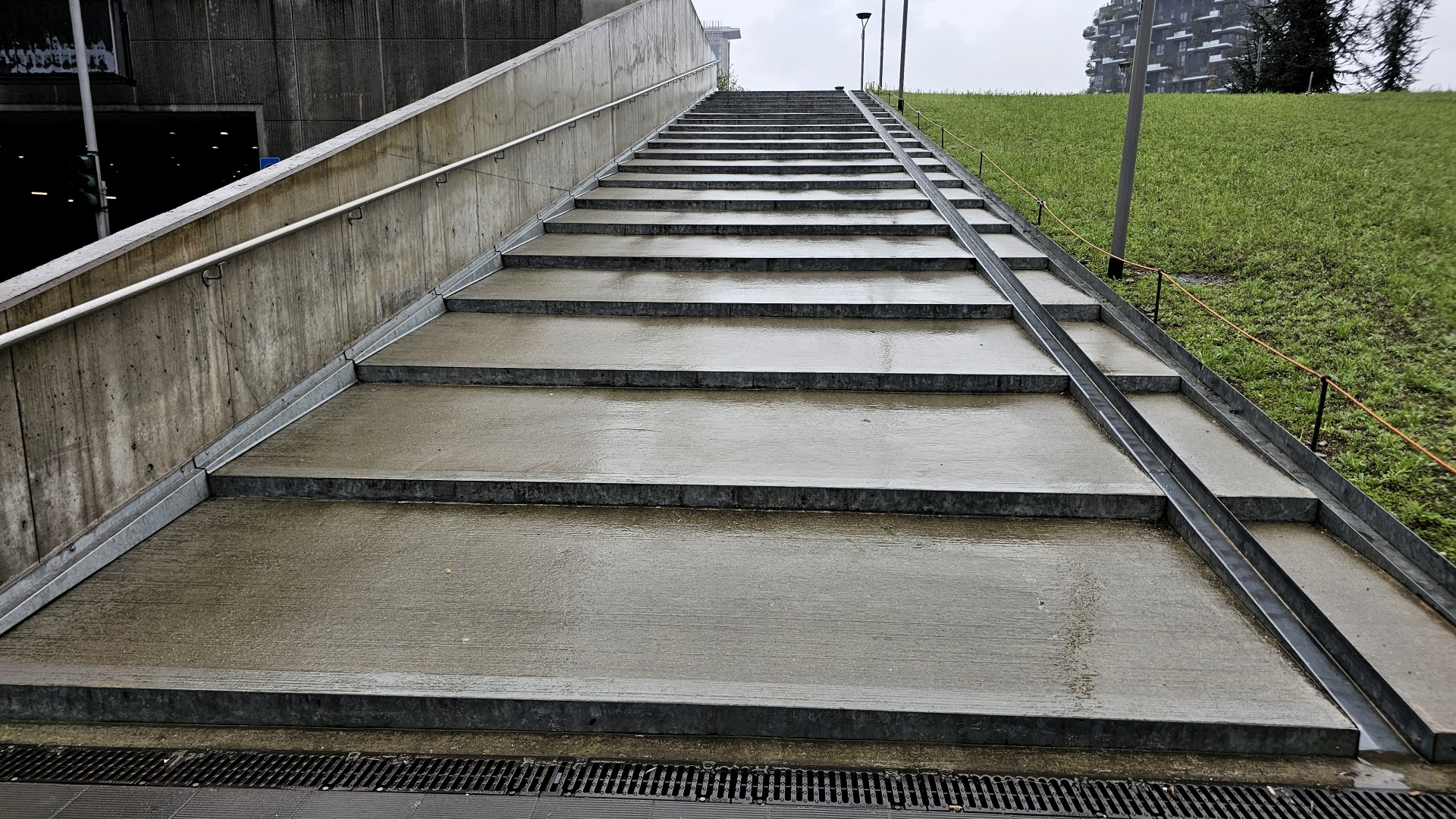On a visit to Milan, I came across a stair close to the famous Bosco Verticale that interested me. I passed these stairs several times and struggled with walking them each time. It was equally difficult up and down; they just did not seem to work for me. That inspired this blog post about stair walking.
The biomechanics of stair walking
Walking up and down stairs is an everyday activity we often take for granted. However, the rhythmic nature of stair walking involves a fascinating interplay of stride length, gait, and challenges posed by different types of stairs.
At the core is a complex interplay of the musculoskeletal system involving maintaining stability with forward, vertical, and side-to-side motion while transferring weight from one leg to the other on the stairs. This requires mobility at the ankles, knees, and hips.
The stride length is a crucial aspect of walking. It can be measured as the distance covered between two successive steps. The average stride length while walking flat is 0.67 m for women and 0.762 for men, but is dependent on height.
There are individual differences in gait, describing how one walks. There are also studies comparing male and female stair walking. Female participants had greater “angular excursion”, which I understand as more sideways motion (centred around the hips), leading to more energy spent.
Negotiating stride length in stair walking
I have written about the rhythm of stairwalking on this blog before, then, in the context of stairs with unequal step height. That was not the case for the Milan stairs. Here, the combination of step length and angle made it troublesome.
The stairs leaned “forwards” quite a lot, and the steps were the wrong distance for my stride length. Consequently, I had to “negotiate” my steps while walking. I tried several approaches, and the best one was a duple meter (one-two) when walking upwards. Then, the stride length was a bit longer than I would have preferred, meaning that I got a quite high speed but also used more energy than trying a triple meter (one-two-three).
On the way down, however, a duple meter made me almost run down the stairs, which was neither safe nor comfortable. Instead, I reverted to a triple meter on the way down. That made for an unnaturally short stride length and also the changing between left and right foot when doing the steps.
The rhythm of city walking
Most people don’t think much about stair walking in everyday life. I usually don’t either. It becomes an issue first when you encounter stairs that just don’t work. I assume stair construction is an important part of architectural education and wonder how these stairs would be perceived from an architectural point of view.
